by Mayumi-H | Jul 26, 2014 | Process
No deep thoughts this week. I’m working hard on the ending of my sci-fi western, so I’ll offer this recent conversation with Twitter buddy George McNeese:
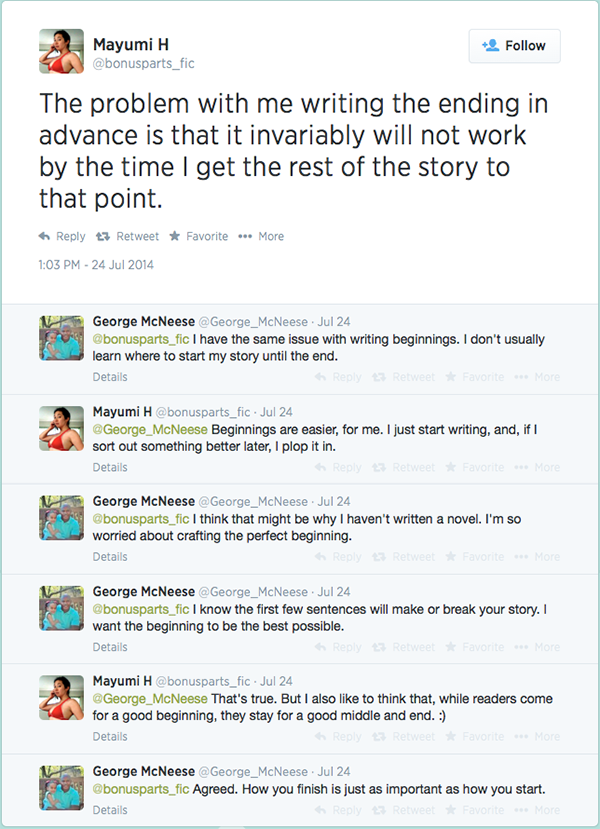
(click to enlarge)
George is one of my favorite Twitter users because he always has thoughtful things to say, often about his own writing journey. That usually leads me to think more deeply about my journey, too, even when I’m in a tough place, as I am right now, re-crafting the ending of my current story. Especially when I’m in a tough place.
I write sequentially, which I enjoy doing because the story feels like it has more natural rises and dips that way. It also pre-empts issues like my current one, where the ending I wrote a year ago – the initial impetus for the story entire – doesn’t fit with the story that’s been built to come before it. It’s not the worst place to be, of course: the characters have grown a lot from that initial writing, too far into themselves to make that ending work. I think that’s a good thing. But it also means creating an almost entirely new ending moment that has the same emotional resonance as the one I first wrote 400 days or so ago.
A story needs to be strong on all counts: beginning, middle, and end. Finding that right (write?) balance for us is the tricky bit. What’s your favorite part of the story to write?
by Mayumi-H | Jun 8, 2014 | From Hell (A Love Story), Persona 4 Fan Fiction, Process
Last time, I talked about writing villains. Everybody had great comments, but Vanessa’s sparked a new idea in me. In my head (sometimes on paper), I have backstories for every character who walks onto my pages for any more than a sentence or two. Most of these backstories are rather simple, because I don’t see the point in spending too much time on a character who is basically just a spaceholder. But for anyone with any significance to the story, they have their own story. But Vanessa’s insight offered me a different perspective: basically, that we storytellers should remember that every good villain is the hero of his or her own story.
Now, this doesn’t necessarily mean that your villain needs to have heroic traits. But, their motivations and characterization should come from a place of realism. The best villains are often ones with whom a reader can personally identify. I don’t know if I managed that with the villains illustrated in last week’s post (actually, I doubt it), but it’s a good characterization technique to remember. So, this morning, I drafted up a couple of would-be storylines for each of those principal antagonists, posted below. If nothing else, it was fun to look at them from a new angle. I’d recommend doing something similar for your own antagonists – you never know when you might be struck with new inspiration.
The Red Widow
It’s a man’s galaxy. That’s what they say. Certainly, it seems that way to a girl sold into slavery for men’s pleasure. But this is no ordinary slave girl. This is one who learns from her so-called “masters”: how greedy, vain, and susceptible men are. Especially to a woman’s charms. Justiciar, pirate, or politician: no matter the insignia on their collar or the banner on their ship, men have their weaknesses, and she knows them all. Her marks have called her many names: Anya, Elsbeth, Illia, Una. But the galaxy knows her better as a woman as smart as any justiciar, as savvy as any pirate, as sly as any politician. It knows her as Red Widow. And she’s going to turn this man’s galaxy upside-down.
Into the Light (Lohengrin, the Swan Knight)
Abram had a son, once. A bright, beautiful boy full of possibilities. A gentle boy cherished for his kindness and skill with a tanner’s knife. The air would sing with the strokes of that knife, and wealthy women and men would come from across all districts to watch and buy his work. Abram loved his boy. But the Darkness loved him, too.
One day, that Darkness came for him, in the form of another smooth-faced boy, and lured Abram’s son away. Away, into the Darkness. What choice for a father but to save his only son? And the only way to save him from the dark was to lead him back into the light. With fire.
The Darkness has taken other boys. The Lost Boys, they are. But he will save them. He will take up arms and become their knight, to set them free, body and soul. He will be Lohengrin, the Swan Knight, their savior.
The Body Electric (Reilly)
The Dahl Army gave Reilly everything: a job, a purpose, even something like a family. For twelve fine years, he fought, laughed, caroused, and conquered by the sides of his fellow commandoes and their skilful sergeant. But on what is supposed to be a routine grab-and-go mission on Artemisia, the unthinkable happens: the op goes sour. An explosion and fire burns away half his soldierly body. And what does Dahl do? They dump him like scrap.
When the Hyperion salvage team finds him rotting in an Artemisian infirmary, they see his potential, and make him an offer: Become part of the Body Electric, a soldier enhanced for the technological wars. Of course, a soldier with potential needs a purpose, but Reilly has a purpose: hunt down his old teammates who left him to die, starting with his glory-hungry sergeant, the man responsible for it all.
Every Shot a Kill (Strenk)
Walking around the galaxy with the S&S munitions manufacturer family name stenciled on his uniform has never meant much to Lukas Strenk. Guns are just tools, only as good as the man who holds ‘em. And he is a great man, the best in the Inner Ring. Every shot from Strenk’s Orion rifle is a kill. But even the simplest kills can go wrong. When Galactic Defense redacts his latest target assignment after knowing the job’s already been done, they blame Strenk, of course, never mind his 100% success rate and the value of his name. “Get yourself gone or get yourself dead,” the GD Justiciar tells him. Strenk’s only answer is a bullet.
To hell with the shifting, shifty so-called rules of the Inner Ring. When the galaxy gives you lemons, you shove ‘em straight up its gaping *** and lick the residue from your fingers.
Once again, I think Strenk came out on top as my favorite of these, though I enjoyed the exercise for all. Have you ever flipped the coin on your antagonists? Have you ever found you identify more with a villain than a hero in a story? Let me know!
by Mayumi-H | May 31, 2014 | Persona 4 Fan Fiction, Process
Recently, I had an interesting dialogue with a writer friend on Twitter. He’d looked through my sci-fi/western/drama/romance and mentioned how “graphic” it is. I agreed that it’s probably “the most gleefully graphic I’ve let myself get in a long time.” Our conversation became more about writing side stories, but I kept thinking about why I’ve enjoyed working with this particular story so much these past few months. Part of that reason is that personal allowance to be graphic, an allowance I haven’t given for my more recent original fiction. There’s a lot of sex, because that’s a big part of the main character’s personal journey, but I’ve also loaded it with more action and violence than I’ve done in a while. Following that thought, I came to realize that it’s the villains who have made this story so much rollicking fun, for me.
I’ve read analyses that say the villain is the most important part of the story. I don’t exactly agree with that wording, because not every story will have a “villain.” In more precise – and also more amorphous – terms, I think it’s conflict that drives a story. I’ve talked about this a bit before, but I want to go into some more detail, here.
Every story needs some conflict, whether it’s external or internal. It’s nice to see characters get a breather or spend some happy time together, but a whole book about that would be rather boring. My drama stories tend to lack a villain in the traditional sense because the conflict usually arises from the hero himself. One of the common characterizations in my stories is that each main character is the principal architect of his or her own happiness…or their own misery. The decisions they make determine how they move forward or backward. Of course, I like development, so they usually set themselves – or get themselves set – on the right path, but the journey’s the fun part, anyway. That said, I hadn’t written a real villain in a long time.
Then, I decided to write a western.
I spent a lot of days reading old westerns, especially the serial stories of Elmore Leonard. The villains in those short stories were varied, violent, cunning bastards. And, even if they only made themselves known for a few pages, they had presence. I wanted my sci-fi shoot-em-up western to have that. Because, while the main character’s internal conflict was perhaps the most important part of the story, he would never be able to make that journey of self-discovery without someone pushing him on. Or shooting at him, as the case came to be.
I love writing my heroes. But, I’ve loved writing these villains, too, each one of them, for their own reasons. Red Widow because she’s a smart, sexy grifter, and deadly for that:
She’d saved her head with her hands, and pushed back against the wall to shove him off. One leg flew out behind her, connecting with Hal’s gut. He staggered with an oof! and she spun, another kick catching him in the ear.
Lohengrin, the Swan Knight, is insane. But his insanity is full of such self-righteous zealotry, his every line full of such grandeur, he makes a formidable foe:
Lohengrin swung his flame toward the popping drehlafette, and licking fire met stoic metal as the autocannon’s barrel slid into place. The muzzle spit its first round, and its second, when the Swan Knight gave a sudden strangled gasp.
Reilly is driven by a simple desire for revenge, but it’s changed him to the point of being unrecognizable even to his old sergeant:
Ax froze at the sight: a gleaming, golden horror of a man, almost seven feet tall with pylons for limbs and black enhancement goggles pressed deep into the puckered flesh of his face. In front of his left eye glowed a red targeting reticle, blazing in the dark. His chest was pockmarked with sparking holes and indentations from the drehlafette, but none of them slowed him down.
And Strenk, who’s probably my favorite of the lot, simply because he has no overarching goal or reason for his grittiness. He’s just plain ol’ nasty:
Strenk’s gaze filled his focus, cold and damning. “Open those pretty petals, tulip.” He dropped his free hand to his crotch. “I want to see if I’ll fit.”
All of these villains do horrible things, and I occasionally feel a bit scared at how easily some of their actions and dialogue have come to me. At the same time, though, I believe in art as a catharsis and unhindered outlay of our personalities, both the dark and light parts of it. Art is also a relatively safe way to explore the more dangerous demons within each of us. I don’t think I could ever pick up a flamethrower and point it at someone, but it definitely gets my senses tingling to imagine that and create it on the page. I suppose what this exercise has truly shown me is that my villains have as much to say about me as they do about my hero. Their danger, their brutality, the sheer ugliness they represent have made this story a crazy-fun ride, because for every dark, twisted action they throw at him, my hero grows a little bit stronger, a little bit wiser, a little more…heroic. But then, isn’t that what a villain is supposed to do?

What is it about your villains that you love? (Come on, admit it: there’s a part of you that loves ’em!)
by Mayumi-H | Dec 14, 2013 | Fearless, From Hell (A Love Story), Process
So, as some folks know, I’m writing this sci-fi western story based on a videogame universe. Blah blah blah, I know, it’s fan fiction and not real writing, whatever. I’m still having a blast with it, and just one of the reasons why is it’s given me a new perspective on some old characters.
For those who read “Anywhere but Here,” my 2012 NaNoWriMo project: Remember Tych and Imien? They were the pilot and the cypher, the secondary runaway characters following the two mains in the teenager half of the story. (Don’t worry if that’s confusing. It’s not important for this post.) Anyway, I came to a point in my current story, “From Hell,” where I needed a getaway ship. At first, I’d planned to model the ship’s captain on the character VT from the seventh session (episode) of the anime Cowboy Bebop, “Heavy Metal Queen.”
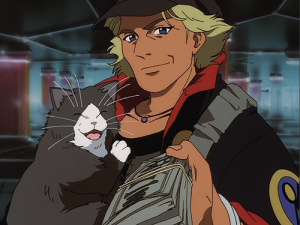
– screen capture: “Cowboy Bebop” –
If you’ve any interest in anime, sci-fi bounty hunter stories, or jazz music, check out Bebop. But, again, not important to this post.
In playing around with the different interaction scenarios between the main characters of “From Hell” and the ship’s captain, I realized the ship couldn’t have just one crew member. So, I developed a daughter for Janus (that was going to be the captain’s name). On the story went, but neither Janus nor the daughter character really took hold with me. The daughter, by the way, never even got far enough in my thought process to get a name. That should tell you something about how well that subplot was going.
One afternoon, I was sitting at my writing desk working on designs for the ship. (That went through a few permutations, too.) I stumbled across an old sketch I’d made of the Ridout, the smuggler’s ship from “Anywhere but Here.” Never one to pass up the opportunity to save the world from my terrible vehicle sketches, I considered my work on the new ship done. And, quite suddenly, it hit me.
I already had a smuggler crew, all ready to go, fleshed out and everything. Enter Tych and Imien…or, as I renamed them, Twitch and Ivory. I’d always liked the Tych and Imien characters, but their personal stories never got any deep attention in “Anywhere but Here,” focused as the story had been on the more major plight of four teenagers on the run from the galactic government. Bringing them into “From Hell” offered me a chance to examine their personalities in a more acute light. Plus, their own conflict, such as it is, relates well to that of the main characters…who are also on the run, now that I think about it, but that’s a thought for another time.
Of course, Tych and Imien had to go through some changes to make the jump from one universe to the other, but I couldn’t believe how stupid I’d been not to consider reusing these characters before! I’d borrowed pieces of other characters to create new ones before – I think every writer does that, at least at a subconscious level. For instance, the second principal character in “From Hell” – Hal, Axton’s engineer partner – developed from a mishmash of Amber from Fearless (cultured and sensitive, but also an elitist snob), and the Brock and Captain Aral characters from “Anywhere but Here” (sharp, loyal, a know-it-all techie, but afraid to pull a trigger). In turn, those characters developed from ones to come before them. I could draw up a whole family tree of where my characters come from…but it would probably be as confusing as the Baratheon/Lannister line of heirs!
I had to bring this up because I’m just having so much darn fun writing this story, and I wanted to share some of my excitement. I’ll go back to more serious stuff next time. Maybe.
Do you recycle characters?
by Mayumi-H | Nov 30, 2013 | From Hell (A Love Story), Uncategorized
(Mostly recycling from Tumblr again, because, after a long week spent helping care for my dad, who’s still going through chemo, I just don’t have the energy to put forth a completely new post.)
In a recent post over at Kourtney Heintz’s Journal, Kourtney brought up the idea of which actor might play which character from her book, Six Train to Wisconsin. While this is different from the idea of who or what may inspire a character, it did make me realize that many of the characters – notably the female ones – from my most recent story were actually based on specific looks and performances.
In “From Hell,” the main character’s appearance has already been determined for the reader, because he’s a borrowed likeness:
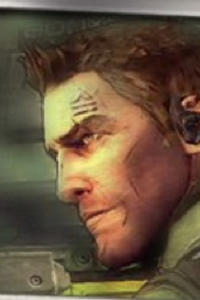
-Axton, the Commando from “Borderlands 2”-
The story may be about Axton, but there’s a slew of women in the supporting cast whom I’ve just adored writing. Among them:
Cin, the charming and sensuous madam who runs the brothel “Cin’s Deadly Seven,” and who was based on gorgeous Adrienne Barbeau’s Ruthie from “Carnivale,” complete with slithering snake tattoos;
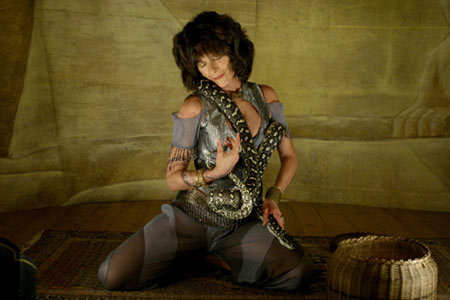
-Carnivale publicity photo-
Red Widow, the cunning, discerning, and dangerous grifter who gives Axton a full-on run for his money in the sexuality and profanity departments (inspired by Gail Potocki’s beautiful and intimidating art below);
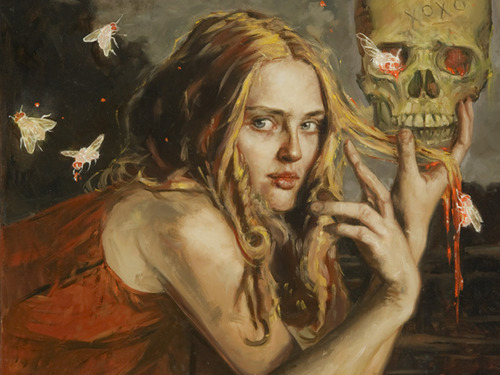
-by Gail Potocki: “Femme Fatale” Cella Gallery show press image-
Marshal Kotonou, who wears a duster and wields a shotgun as well as any man, for protection of her borderworld town (and to whom I’ve attempted to give a nod of attitude and beauty to Gina Torres’s Zoe from “Firefly);
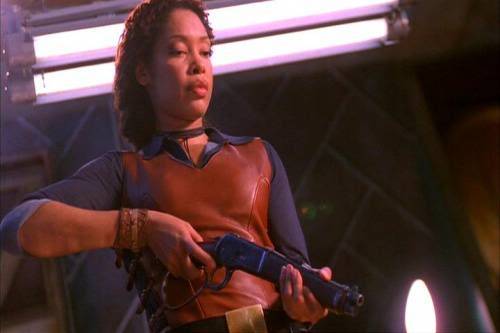
-“Firefly” publicity photo-
Lucy, the practical and sassy prostitute who has better insight into the main character’s head than he does, himself (based on the luscious Patricia Arquette’s portrayal of Sally Wheet in “Boardwalk Empire”);
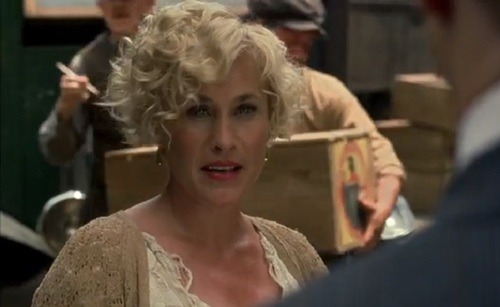
-screen capture: “Boardwalk Empire”-
and Sarah, the main character’s ex-wife from his military days, who provides some telling background about why he is the way he is (inspired by the many roles of lovely singer/actress Ana Brenda Contreras).
Oh! And, of course,
Gaige, the girl who starts the whole story rolling (head on over to
Contagious Media for the full photoshoot)…

-Gaige cosplay by ContagiousMedia-
Stories about men tend to focus on just the men. Especially in the Western genre, where supporting women can fall into pretty predictable (and often hackneyed) categories. The women Axton encounters throughout the story might exist within those same categories, but I hope I’ve added some new dimensions to a few of them. They’re just so much more fun to write, that way. Hopefully, readers are enjoying the women in this story, too. Because, really, what’s a man without a good woman, whether she’s there to screw, fight, or be his conscience?
From where do you get your character inspirations? If you could cast anyone as one of your main characters, who would it be?









![Photo by Valeriatroche (Own work) [CC-BY-SA-3.0 (http://creativecommons.org/licenses/by-sa/3.0)], via Wikimedia Commons](https://24.media.tumblr.com/763f4005039c2534c7d2bb0fe86fa3c5/tumblr_mwjg29ZOyX1qgv9sto1_400.jpg)

Recent Comments